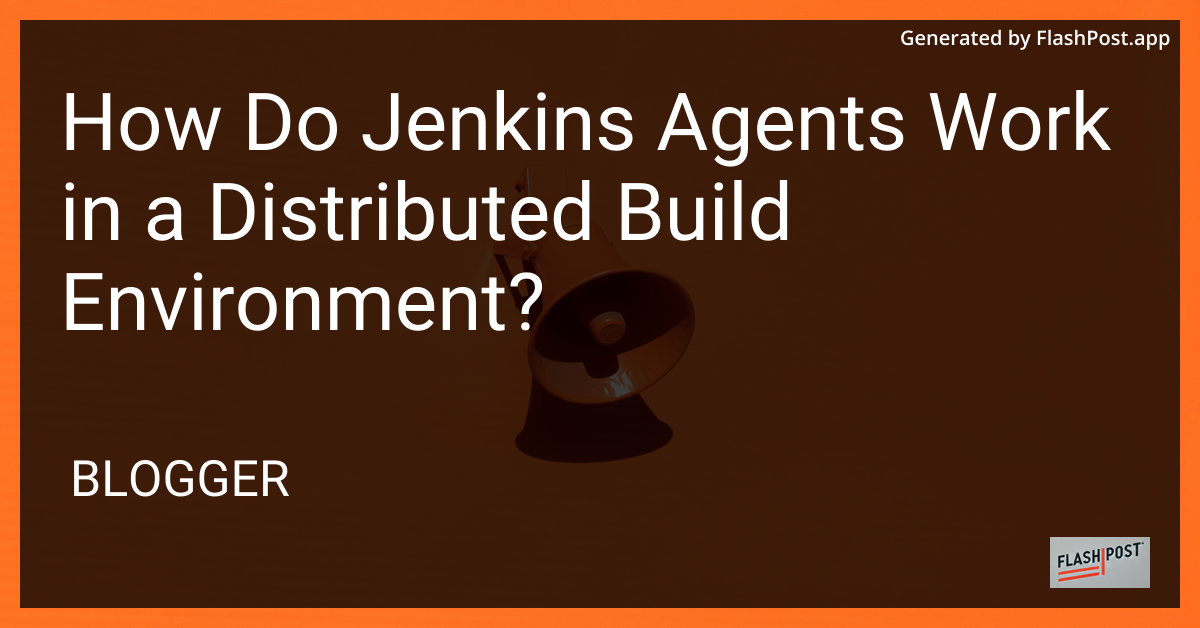How Do Jenkins Agents Work in a Distributed Build Environment?

Understanding Jenkins Agents in a Distributed Build Environment
In today’s fast-paced DevOps world, continuous integration and continuous deployment (CI/CD) are crucial. Jenkins, a popular open-source automation tool, plays a pivotal role in this process. Within Jenkins, agents are indispensable, especially in a distributed build environment. But how do Jenkins agents work, and why are they vital?
What Are Jenkins Agents?
Jenkins agents, formerly known as build slaves, are machines that perform the tasks assigned by the Jenkins controller (previously called the master). Agents allow Jenkins to distribute build processes across several machines, optimizing resource usage and speeding up the CI/CD pipeline.
Why Use a Distributed Build Environment?
A distributed build environment offers numerous advantages:
- Efficiency: By distributing workload, it reduces the bottleneck on a single Jenkins server.
- Scalability: More agents can be added to handle increased workloads or specific tasks.
- Resilience: If one agent fails, another can take its place, ensuring the pipeline continues to run smoothly.
How Jenkins Agents Work
1. Agent Configuration
Agents can be configured in multiple ways: as Docker-based agents, static agents on physical machines, or cloud-based agents. The method of configuration impacts the setup and maintenance approach, but the core functionality remains similar.
2. Connecting Agents
Agents communicate with the Jenkins controller using different protocols like JNLP (Java Web Start), SSH, or via a web-based protocol using HTTP. Once connected, agents are synced with the controller to begin executing jobs.
3. Agent Execution
Once an agent receives a task from the controller, it carries out the job by executing build scripts, running tests, compiling code, or other defined activities. Successful execution results are sent back to the controller for logging and analysis.
4. Load Balancing
Jenkins’ distributed architecture allows for effective load balancing. The controller efficiently assigns tasks based on the availability and capacity of agents, ensuring optimal performance.
5. Scalability and Flexibility
Agents can be added or removed according to the needs of a project. Jenkins supports various plugins and integrations that make scaling in a distributed build environment seamless.
Best Practices for Managing Jenkins Agents
- Regular Monitoring: Constantly monitor agent performance and resolve issues promptly to avoid bottlenecks. For more Jenkins troubleshooting tips, visit here.
- Efficient Resource Allocation: Assign specific tasks to specific agents based on their capabilities. Some agents may be better suited for certain types of builds.
- Plugin Management: Utilize Jenkins plugins to enhance agent performance and integrate other tools like SonarQube. Learn how to do this here.
Conclusion
Understanding how Jenkins agents operate in a distributed build environment is crucial for optimizing your CI/CD pipeline. By leveraging the flexibility and scalability of Jenkins agents, you can enhance your DevOps practices, ensuring faster and more reliable software delivery. For insights on handling errors in Jenkins, check out this guide.
Distributing builds with Jenkins agents optimizes workloads, promotes scalability, and enhances the resilience of software development processes. Adopt best practices and harness the full potential of Jenkins to stay ahead in the competitive DevOps landscape.
Comments
Post a Comment